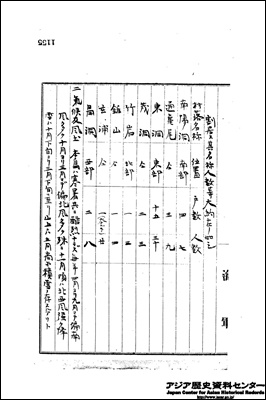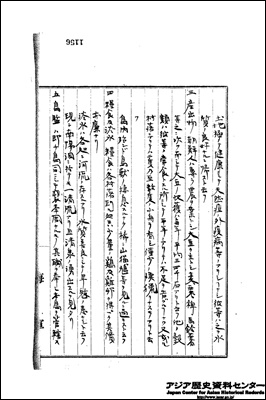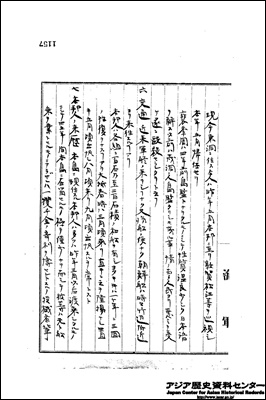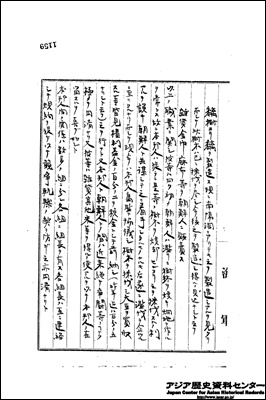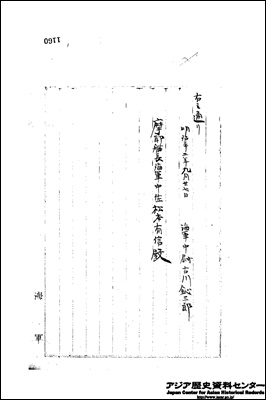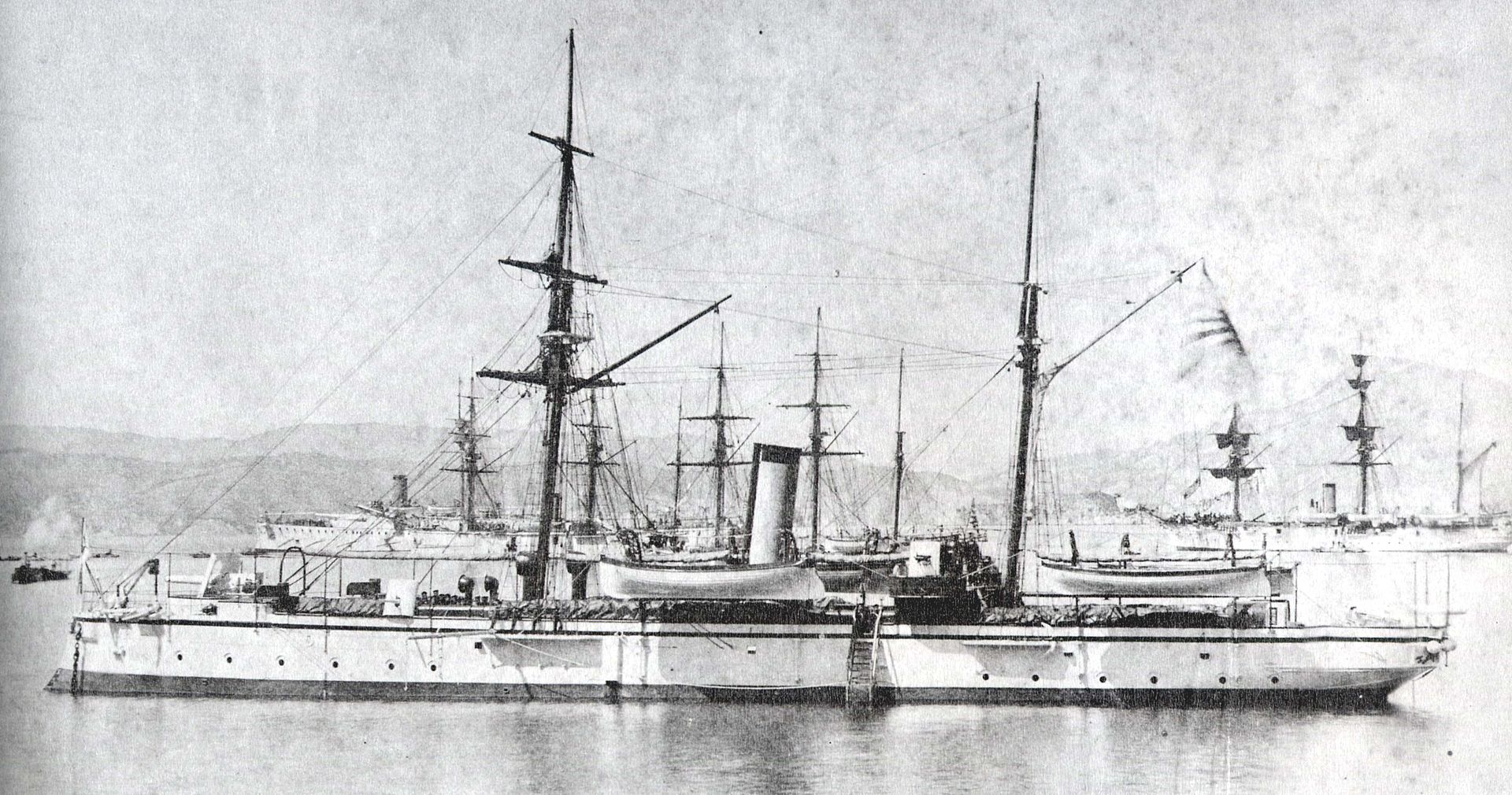 The Japanese Ship Maya (摩耶) was an iron-hulled, steam gunboat, serving in the early Imperial Japanese Navy. She was the lead vessel in the four vessel Maya class, and was named after Mount Maya in Kobe. In September of 1899, Maya would inspect Korea’s Ulleungdo Island.
The Japanese Ship Maya (摩耶) was an iron-hulled, steam gunboat, serving in the early Imperial Japanese Navy. She was the lead vessel in the four vessel Maya class, and was named after Mount Maya in Kobe. In September of 1899, Maya would inspect Korea’s Ulleungdo Island.
In itself, this report has little directly related Dokdo data. However, the Maya’s logbook does give us valuable information about historical figures such as Japanese trespassers Amano Genzo and Ulleungdo Governor Bae Gye Ju. I’ve managed to combine the Maya’s Logbook entry with some other records. I would first like to elaborate on the process of Ulleungdo’s erosion of sovereignty.
I’ll also do a deeper study of Korean Governor Bae Gye Ju dispelling Japanese assertions local Korean were not cognizant of Dokdo before the turn of the 19th Century. The Maya logbook has some revealing information about Bae Gye Ju. I’ll add some other records to supplement these points.
九月二十五日、視察ノ命ヲ受ケ、鬱陵島南陽洞ニ上陸ス。同地ニハ、組長トモ称スベキモノハ、島根県人天野源蔵外一名アリ。就中、天野ハ五年前ニ来島シ、内部事情ニ通ズト聞ク。由テ同人ニ就キ聞知シ得タル処、大要左ノ如シ。
鬱陵島
一 廣袤及人口 本島ハ、周囲一三里アリト称ストイエドモ、実際較之ヨリ小ニシテ、島内、峻山屹立シテ、海岸ハ陡岸ニシテ、殆ンド平地ト称スベキモノナク、處處ニ、少許ノ砂浜ノ存スルアリテ、波穏カナルトキハ、端艇ヲ着岸スルコトヲ得ベシ。
本
島ニアル朝鮮人ハ、戸数五百、人口二千内外アリト難ドモ、彼ラハ各自開墾セル畑地ノ付近ニ住スルヲ以テ、家屋ハ谷間、若シクハ山腹ニ於テ、各所ニ散在シ、其中、較較、村落ノ形ヲナスモノ、八個アリ。而シテ、現今、本島ニ在留スル本邦人ハ、老若男女相合シテ百名内外ニシテ、本年五六月頃マデハ、百五十名内外アリシト云フ。是等ノ本邦人ハ、前記ノ部落内ニ割居ス。其名称・人数等、大約、左ノ如シ。
村落名称 位置 戸数 人数
南陽洞 南部 四 七
通亀尾 同 三 九
東洞 東部 一五 三十
茂洞 同 二 三
竹岩 北部 一 三
錐山 同 一 四
玄浦 同 一(大ナルコト) 二十
昌洞 西部 二 八
二 気候及風土
本島ハ寒暑共ニ酷烈ナラズ、毎年、四月ヨリ九月マデ偏南風多ク、十月ヨリ三月マデ偏北風多ク、殊ニ十一月頃ハ北西風強ク、降雪ハ十月下旬ヨリ三月下旬ニ至リ、山上ニハ五月尚ホ、積雪ノ存スルアリト。
土地、極メテ健康ニシテ、天然痘ノ外疫病等ノアリシコトナシ。
彼ラハ之ヲ水質ノ良好ナルニ帰スト云フ。
三 産出物
朝鮮人ハ専ラ農ヲ業トシ、大豆ヲ主トシ、麦・粟・稗・馬鈴薯等、之ニ次グ。而シテ大豆ノ収穫ハ、毎年平均三四千石アリト云フ。
他ノ穀類ハ、彼ラノ常食トスル所ニシテ、平年ニアリテハ不足ヲ告グルコトナク、又、或ル村落ニアリテハ、二隻乃至数隻ノ小舟ヲ有シ、僅少ノ漁猟ヲナスモノアリト云フ。
島内、殆ンド鳥獣ノ棲息スルナク、稀ニ山猫・鳩等ヲ見ルニ過ギズト云フ。
四 糧食及淡水
糧食ハ、各村落、至ル所、只少量ノ鶏、及鶏卵ヲ得ベク、其価、又廉ナリ。
淡水ハ、各所ニ河流ノ存スルアリ。水質善良ニシテ、旱魃ノ患ナシト云フ。現ニ、南陽洞ニ於テモ一清流アリ。且、清泉ノ湧出スルヲ見タリ。
五 島監ハ、即チ島司ニシテ、裵季周ナルモノ其職ヲ奉ジ、本島ヲ管轄ス。現今、東洞ニ住ス。同人ハ昨年五月、本邦ニ至リ、敦賀・松江等ヲ巡視シ、本年五月帰任セリ。
裵季周ハ、四年前、島監トナリタルモノニシテ、性質温良、少シク日本語ヲ解ス。又、前ハ茂洞人、島監タリシモ、或ル事情ノタメ人民ヨリ悪シミヲ受ケ、遂ニ敺殺セラレタリト云フ。
六 交通 近来、軍船ノ来リシコトナク、又、汽船ノ便ナク、朝鮮船ハ、時々、竹辺附近ヨリ来往スルコトアリ。
本邦人ハ、各組ニ百石乃至二百石積ノ和船ヲ有シ、多キ時ハ、一ケ年ニ三回ノ往復ヲナスコトアリ。大抵、春時ハ三月頃来リ、直チニコレヲ陸揚ゲシ置キ、五月頃出帆シ、八月頃来リ九月頃出帆スルヲ常トスト。
七 本邦人ノ来歴 本島ニ現住スル本邦人ハ、多クハ昨年三月以降、渡来シタルモノニシテ、四五年間本島ニ在留セルモノ極メテ僅少ナリ。而シテ彼等ハ、元ト船乗リ業トセルモノニアラザレバ、一攫千金の奇利ヲ博サントスルモノ、投機者輩ラ多シトス。而シテ島根県最モ多く、間々、鳥取、若クハ、大分付近ヨリ来ルモノアリ。
八 本邦人ノ生活 彼等の家屋、納屋ノ如キモノニシテ、糧食品ノ主ナルモノハ、和船ニヨリテ輸入ルモノニシテ、平時ハ不足ヲ感ジルコトナキモ、海上不穏等ノタメ、和船ノ沈没等アリシタメ、大ニ欠乏ニ苦シミタルコトアリト云フ。而シテ、是等和船ハ、大概、伯耆・堺、石見国・濱田ヨリ来ルモノニシテ、果シテ密輸出ヲナスモノタルヤ、或ハ他ニ目的地ヲ詐リ、輸出シ来ルモノヤ、知ル能ハズ。
九 本邦人ノ職業 島内ノ樹木ヲ伐採シ、和船ニヨリテ之ヲ本邦ニ輸出シ、其ノ多クハ、敦賀・博多・馬関等ニ之ヲ揚陸ス。其樹木ハ、槻及松ニシテ、槻ハ現今、其最大ナルモノ長サ七尺、幅三尺七八分ナルモノアリ。勿論之等ハ海岸ニ於テ得ル能ハズ。松ハ朝鮮人ニ販売スルモノノミニテ、雑用ニ供スト云フ。大豆ヲ買収シ、之ヲ本邦ニ輸出ス。蓋シ、本島産出額ノ大半ハ、本邦人ノ手ヲ経過スルモノナリ。
樹ヨリ黐ヲ製造ス。現ニ南陽洞ニアリテモ、之を製造シアルヲ見タリ。而シテコノ樹木ハスデニ伐材ヲ尽クシ、今後之ヲ製造シウル見込ナシト云フ。
雑貨・金巾・麻布等を朝鮮人ニ販売ス。
以上ノ職業ニ関シ、彼ラハ曰ク、初メ朝鮮人ハ濫リニ樹木ヲ焼キ、畑地ヲ作ルヲ常トス。故ニ本邦人ハ、徒ニコレ等ノ樹木ヲ焼却セシヨリ、之ヲ伐材スルノ利ヲ説キ、朝鮮人ト共謀シテ之ニ着手シタルモノナルモ、后、遂ニ乱伐ヲ企ツルニ至リタルナリ。而シテ現今ハ、本邦人・島監協議シ、樹木ヲ伐採シ、大豆ヲ買収スルコト、皆、見積、利益金ノ百分ノ二ヲ税金トシテ前納シ(昨年マデハ百分ノ五ナリシト云フ)、之ヲ行ウト。又、本邦人ト朝鮮人トノ間ハ、近来絶テ争闘等ノコトナク、極メテ円滑ナリ。又、彼ラハ、雑貨、其他、米ナドヲ得ルノ便アルヲ以テ、本邦人ノ在留スルヲ喜ブ如シト。
本邦人ノ関係ハ、数多ノ組ニ分カレ、各組ニ組長ヲ有ス。各組長ハ、互ニ連絡シテ規約ヲ設ケ、以テ競争・軋轢ノ弊ヲ防ギ、之亦、円満ナリト。
右ノ通リ
明治三十二年九月二十七日
海軍中尉 古川鈊三郎
On September 25, I received an order to make an inspection and landed in Namyang-dong, Ulleungdo. There was one other person, Amano Genzo, a Shimane Prefecture resident, who should be called the “leader” of the group. Amano came to the island five years ago, and is said to have no knowledge of internal affairs. The following is a summary of what we have learned about him.
Ulleungdo Island
Although the island is 13 ri in circumference, it is actually smaller than this, with steep mountains rising high above the island, and the coast is almost completely flat, with only a few sandy beaches in places.
Hondo
The Koreans on the island number about 500 households and have a population of about 2,000, but they live near fields that they have cultivated, and their houses are scattered throughout the valleys and sometimes on the mountainsides, and among them there are eight that look more like villages than others. The number of Japanese living on the island at present is about 100, including men and women of all ages, and as of May and June of this year, there were about 150. These Japanese nationals are located in the aforementioned tribe. The names and number of people are as follows.
Village name Location Number of houses Number of people
Nanyang-dong Nanbu 47
Tongameo 39
Dong-dong Dongbu 15 30
Mao-dong 23
Juk-am North 13
Gyunsan (Mt.) 14
Hyeonpo (Hyeonpo) 1 (Dae Narukot) 20
Changdong Seobu (western part) 28
2 Climate and Climate
The main island is not extremely hot and cold, and there is a prevailing southerly wind from April to September and a prevailing northerly wind from October to March every year, especially around November. The land is extremely healthy, and there are no epidemics other than smallpox.
They attribute this to the good quality of the water.
(3) Products
The Korean people are engaged exclusively in agriculture, with soybeans as their main crop, followed by wheat, millet, milia, potatoes, etc. The soybean crop is the most important crop in Korea. The average annual harvest of soybeans is said to be 3,400 goku. Other grains are his staple food, and in a normal year there is no shortage of these grains. Almost no birds or animals inhabit the island, and only rarely do they see wildcats or pigeons.
(4) Food and fresh water
For food, each village and community should obtain only a small amount of chickens and eggs, which are inexpensive. Fresh water is available in many places. The water quality is good and there is no drought. There is actually a clear stream in Nanyang-dong. In addition, a clear spring was seen gushing out.
(5)The governor of Ulleungdo is named Bae Gi-ju, who was appointed to this post and has jurisdiction over the main island. He currently resides in Dodong. He arrived in Japan in May of last year, patrolled Tsuruga and Matsue, (Japan) and returned to his post in May of this year.
Bae Gi-ju was appointed island supervisor four years ago, and is of warm disposition and understands a little Japanese. There was another island supervisor, but under certain circumstances, he received ill-treatment from the people and was finally beaten to death.
(6) Traffic: No military vessels have come to the island in recent years, and there is no steamship service, so Korean ships sometimes come and go from the vicinity of Takehabe. Japanese people have Japanese ships of 100 to 200 stone each, sometimes making three round trips in a year. They usually arrive in the spring around March, leave their wagons ashore immediately, set sail around May, arrive around August, and set sail around September.
(7)Most of the Japanese who currently reside on this island have arrived since March of last year, but the number of those who have stayed on the island for 45 years is extremely small. And, although they were not originally sailors, many of them were speculators who wanted to make a fortune. The largest number of them came from Shimane Prefecture, while others came from between Shimane and Tottori, and even from the vicinity of Oita.
(8)The main foodstuffs in their houses and barns were imported from Japanese ships, and although they did not suffer from shortages in normal times, they suffered greatly from shortages when the sea was unstable and when Japanese ships sank. Therefore, most of these ships came from Hoki, Sakai, and Hamada in Iwami Province, but it is impossible to know if they were smuggling goods or exporting them to other destinations.
(9) Occupations of Japanese people Trees on the islands were cut down and exported to Japan by Japanese ships, many of which landed at Tsuruga, Hakata, Umaseki, etc. The trees were made of tsuki (Japanese zelkova), tsuki (Japanese zelkova), and tsuki (Japanese zelkova). The trees were tsuki (Japanese zelkova) and pine trees, the largest of which is now seven feet long and three feet wide and seventy-eight minutes long. Of course, these trees cannot be found on the coast. Pine trees are sold to Koreans and used for miscellaneous purposes. Soybeans are purchased and exported to Japan. However, the majority of the island’s output is produced by Japanese hands.
The trees are used to make lime. At present, it is seen being produced in Nanyang-dong. However, the trees have been cut down so quickly that it is not expected that they will be used to make these products in the future.
Sold sundries, gold coins, linen, etc. to Koreans.
In regard to the above occupation, he said that Koreans usually burn trees and cultivate fields. Therefore, Japanese people have been preaching the benefits of felling trees rather than burning them, and they have been conspiring with Koreans to do so. However, now, after consultation between the Japanese and the island supervisors, the trees were cut down and soybeans were purchased, with an estimated 2/100 of the profits being paid in advance as taxes (last year, it was 5/100). There has been no conflict between Japanese and Koreans in recent years, and things are going extremely smoothly. They are also pleased to see Japanese nationals staying in Japan because of the convenience of obtaining sundries and other rice.
The relations among the Japanese are divided into many groups, and each group has its own leader. The leaders of each group shall communicate with each other and establish rules and regulations to prevent competition and friction, and to ensure that all is well.
As shown on the right.
September 27, 1899
Navy Lieutenant Furukawa Kanzaburo
Commander Matsumoto Arinobu, Captain Maya
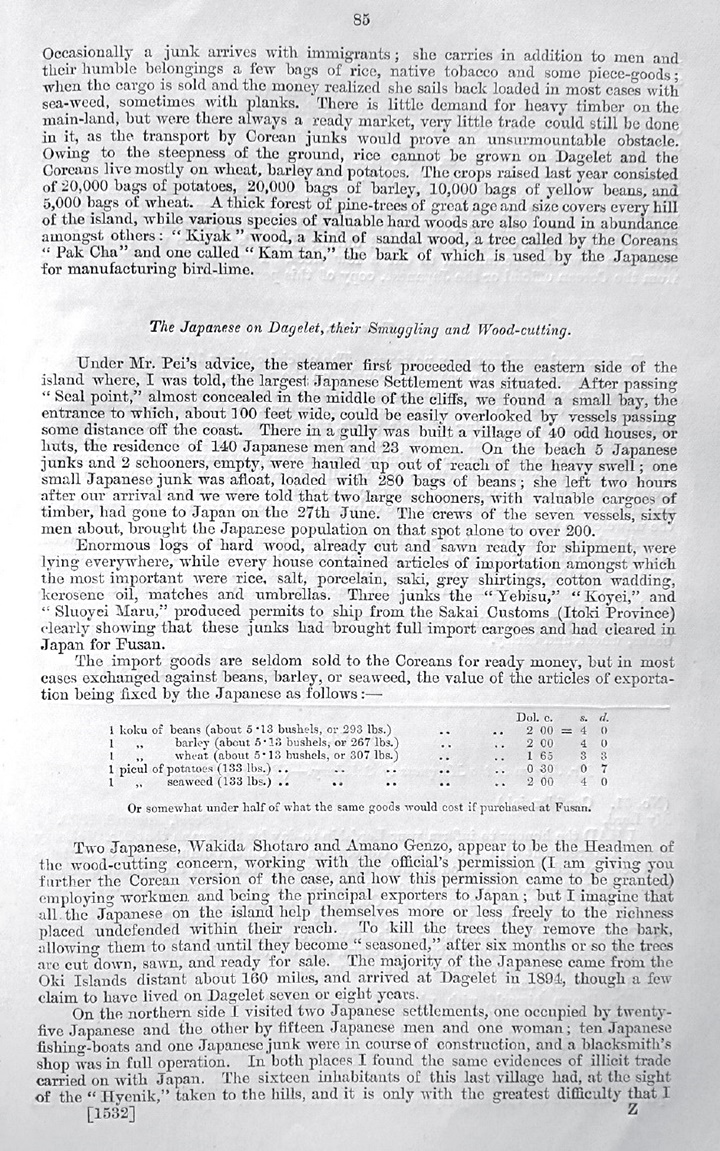 “…Two Japanese, Wakida Shotaro and Amano Genzo, appear to be the Headmen of the wood-cutting concern, working with the official’s permission (I am giving you father the Corean version of the case, and how this permission came to be granted) employing workmen and being the principal exporters to Japan; but I imagine that all the Japanese on the island help themselves more or less freely to the richness placed undefended within their reach.
“…Two Japanese, Wakida Shotaro and Amano Genzo, appear to be the Headmen of the wood-cutting concern, working with the official’s permission (I am giving you father the Corean version of the case, and how this permission came to be granted) employing workmen and being the principal exporters to Japan; but I imagine that all the Japanese on the island help themselves more or less freely to the richness placed undefended within their reach.
With the exception of a commission of two per cent to the brokers or middlemen who assist them in disposing of their goods, the Japanese pay no taxes. No doubt some years ago the official did try and probably succeeded in obtaining from the Japanese some compensation for the timber carried away, but having seen their present strength and their attitude (there are in 250 residents without counting the crews of vessels), I am convinced that they pay neither tax nor squeeze of any kind and that officials and people alike have only one wish, to get rid as soon as possible of the unwanted visitors…”
E.Laporte’s Entire July 24th 1899 Situation on Ulleungdo
 After the inspection report by E. Laport there appears to be a document instructing both Amano Genzo (天野源藏) and Hatamoto Kichizo (畑本吉藏) to leave Ulleungdo by November 30th 1899. However, the situation on Ulleungdo continued to deteriorate and by 1902 the Japanese would forcibly install their own police force on Ulleungdo. Not only would Amano Genzo and Hatamoto Kichizo not leave, they would become members of a business group that would control commerce on Ulleungdo. With the support of Japanese police, this would make Ulleungdo a defacto province of Japan, arguably the first Korean land to be colonized by Japan…
After the inspection report by E. Laport there appears to be a document instructing both Amano Genzo (天野源藏) and Hatamoto Kichizo (畑本吉藏) to leave Ulleungdo by November 30th 1899. However, the situation on Ulleungdo continued to deteriorate and by 1902 the Japanese would forcibly install their own police force on Ulleungdo. Not only would Amano Genzo and Hatamoto Kichizo not leave, they would become members of a business group that would control commerce on Ulleungdo. With the support of Japanese police, this would make Ulleungdo a defacto province of Japan, arguably the first Korean land to be colonized by Japan…第九號
今般我等當鬱陵島ニ於テ樹木ヲ濫伐シ倂セテ在住ノ義嚴禁スヘキ旨御達ノ趣キ拜聽仕候就テハ御下命ノ通リ當明治三十二年十一月三十日限リ退去候樣可仕此段一同ニ代リ御受仕候也
明治三十二年九月二十五日
島根縣隱岐國西鄕中町百三十八番地 當時鬱陵島在 畑本吉藏, 鳥取根東伯郡附村 當時鬱陵島在 天野源藏
在元山領事館 外務書記生 高雄謙三 殿
No. 9
This time, we understand the intent of the proclamation prohibiting the cutting of trees and residing here on Ulleungdo, and as you have commanded, we will vacate the island by November 30, 1899. On behalf of all of us, we will carry out the order as you have said. September 25, 1899
138 Nakago-cho, Nishigoho, Oki, Shimane Prefecture, at the time of his residence on Ulleungdo,
Hatamoto Kichizo,
Tsuke-mura, Tohaku-gun, Tottori-ne, currently Ulleungdo,
Amano Genzo
Mr. Kenzo Takao, Foreign Affairs Secretary, Consulate in Wonsan
 In 1902 the Japanese published a Trade and Commerce Book which had a section detailing the situation on Korea’s Ulleungdo.
In 1902 the Japanese published a Trade and Commerce Book which had a section detailing the situation on Korea’s Ulleungdo.
By this time, the Japanese had created a Merchant’s Association at Dodong, Ulleungdo with elected leaders in an attempt to control their activities on the island. What’s surprising about is the list of members in this group. It seems not only had Amano Genzo (天野源藏) and Wakida Shotaro not left Ulleungdo, they had become profiteers on the island.
We can also see what seems to be the name Hatamoto Kichizo (畑本吉造). (written differently which was sometimes the case with Japanese names.) Hatamoto Kichizo was the President of the Ulleungdo Merchant Association.


